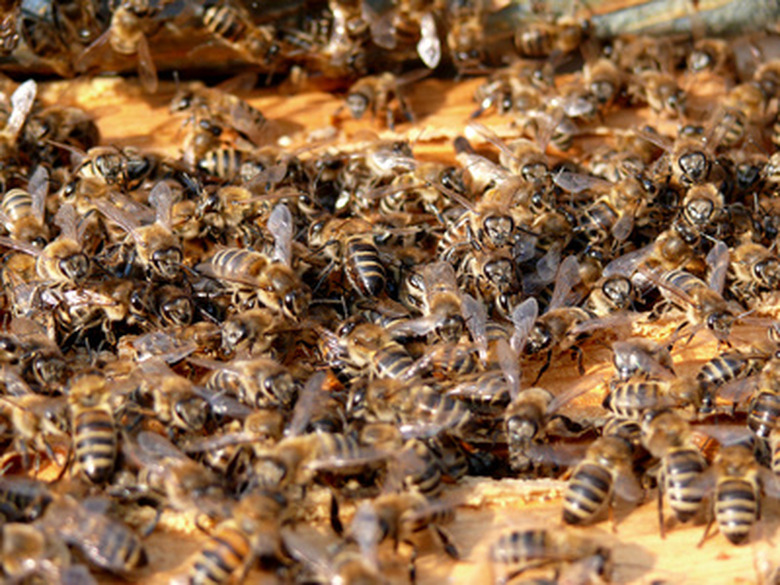Flowering Plants That Do Not Attract Bees
Bees do not have an exclusive in the pollination of flowering plants. Although the majority of flowering plants are pollinated by bees, some plants are pollinated by birds, butterflies, moths or other insects. Bees primarily pollinate highly scented flowers that are open during the day and they are attracted primarily to blue, purple and white flowers. There are several varieties of flowers you can plant if you are trying to cut the number of bees in your garden.
Foxglove (Agalinas spp.)
Hummingbirds pollinate flowers with long throats, in which these birds insert their long beaks and drink the flower's nectar. Foxglove has a series of these small elongated blossoms that open up along their spiky stems. Hummingbirds alight on the stem and feast on the nectar of the open flowers, one at a time, until they've drank their fill.
- Bees do not have an exclusive in the pollination of flowering plants.
- Hummingbirds pollinate flowers with long throats, in which these birds insert their long beaks and drink the flower's nectar.
Foxglove are perennials that are easily grown from seed, although they won't bloom until the second year after sowing. They prefer partial shade in rich to average soil. Water well and apply all-purpose slow-release fertilizer when planting and they will quickly grow to a height of up to 5 feet, depending on the variety. Their bell-shaped flowers come in shades of red, pink, magenta, white and cream. All parts of foxglove are poisonous to humans and domestic animals.
Zinnia (Zinnia elegans var.)
Zinnias are pollinated by butterflies and are not attractive to bees. Flowers with a wide open center, such as zinnias, are attractive to butterflies because they are able to perch on the petals while drinking the nectar. The pollen sticks to their feet and they spread it from flower to flower. Available in a wide range of sizes, colors and flower shapes, zinnias tender annuals that are an ideal addition to any garden–especially if you want to attract butterflies.
- Foxglove are perennials that are easily grown from seed, although they won't bloom until the second year after sowing.
Plant zinnias in full sun in fertile, well-drained soil. Leave plenty of space around each plant; zinnias are susceptible to powdery mildew, a white powdery-looking substance that appears on the leaves and stems of many flowers in late summer.
Datura (Datura wrightii)
Moths primarily fly at night and are the pollinators of many varieties of plants whose flowers open only at night. Moths collect pollen with their antennae, which are various shapes and sizes depending on the species. The flattened trumpet shape of datura blossoms give the moths a place to sit while they probe the elongated center of the flower with their antennae. Datura opens its blossoms shortly after sunset, releasing their scent and attracting their pollinating moths.
A tender perennial, datura is grown as an annual in temperate zones. It self-seeds readily and prefers soil that is not too fertile. Plant it in full sun in an area of the garden where other plants struggle to grow. Keep it well watered, do not give it any fertilizer, and datura will bloom until killed by frost. The flowers and seeds of the datura are toxic to humans and pets.
- Plant zinnias in full sun in fertile, well-drained soil.
- Leave plenty of space around each plant; zinnias are susceptible to powdery mildew, a white powdery-looking substance that appears on the leaves and stems of many flowers in late summer.
